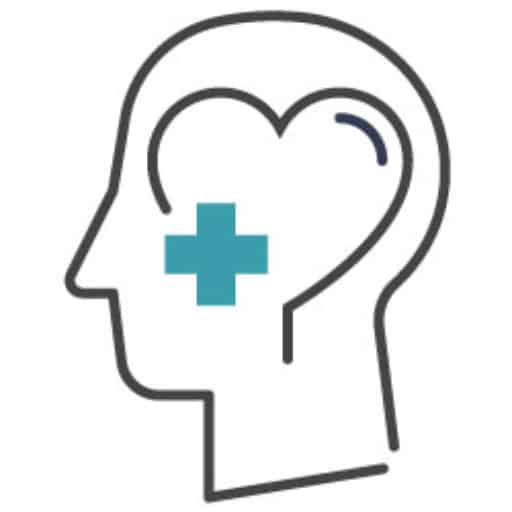When you have kids, you quickly discover that meltdowns and tantrums are inevitable. Childhood anger can be stressful — both for you and your child — so it’s important to find healthy regulation strategies. After all, the lessons we learn as children follow us into our adult lives. By starting early, you can set your kids up for success in the long run.
What Does It Mean to Be Good at Getting Angry?
Anger is a normal emotion; everyone feels it. Being good at getting angry simply means learning to recognize, process, express and cope with this emotion. This skill helps your child recognize what they are feeling as well as better articulate their needs and emotions. It also helps them find safe, healthy outlets for their rage.
Why Are Childhood Anger Skills Important?
When kids learn to manage anger at a young age, they’re better prepared to handle stressors without flying off the handle. They will be able to express and release anger in a way that doesn’t scare or harm other people — an essential part of healthy social, professional and intimate relationships.
Have you ever met an adult who bottles up their anger until it explodes at an inappropriate time? Or, maybe you’ve seen someone who rages at everyone in sight, screaming with an alarming intensity? Chances are, these people never learned to regulate their anger.
Helping kids with anger is one way to help them become high-functioning adults who know how to manage their emotions. It’s a skill that will serve them in every area of their lives.
How to Teach Your Kids to Express Themselves
The best time to learn how to deal with children’s anger is before it happens. Come up with a game plan in advance, so you’re prepared when your child melts down at a restaurant or before bedtime. Be gentle with yourself and your child — it takes time to learn anger management skills.
- Validate Their Emotions
Many adults grew up thinking that anger is an off-limits emotion, so they may feel shame or self-judgment when they experience angry feelings. The best way to avoid this is to validate your child’s anger and let them know it’s okay to feel that way. - Help Kids Recognize Anger
When kids are little, they can’t always identify emotions; the feelings simply flood over them. As a parent, you can help by teaching kids to recognize anger when it happens.
There are a few ways to go about this process. You can talk about what it feels like to get angry; maybe your face feels hot or you start to breathe heavily. Anger feels different for everyone, so you can explore different options using discussion and kids’ books, TV shows and games until something resonates with your child. - Teach Kids to Name Their Feelings
While kids are learning to identify their anger, help them find the words to describe it. You can start simply with phrases like “I’m mad” or “I’m angry.” As their vocabulary grows, work on adding words to explain the situation that triggered the anger, for example, “I’m mad at you for not letting me have that toy.”
The act of naming emotions can be powerful. When a child feels anger, it can feel scary and overwhelming; naming it takes away some of that power. As your child pauses to identify the feeling, it also tends to interrupt the cycle of rage. - Teach Acceptable Coping Behaviors
Coping behaviors are the things kids do to release the energy surrounding emotions. This can be a challenging step for parents — you must teach kids that all emotions are okay, but all behaviors are not. It’s important to help kids cope in a way that isn’t aggressive, dangerous or damaging.
Observe how your child reacts to anger. If they tend to work themselves up into a screaming fit, you might teach them to take three deep breaths every time they feel frustrated. If they have strong physical reactions, you might help them work out that energy by running up and down the stairs or squeezing modeling clay.
The key here is to teach your kids to implement their coping strategies when they start to feel angry. That way, it’s easier to head off a meltdown or temper tantrum. - Regulate Your Own Anger
When you’re a parent, your kids are always watching. If you scream obscenities at other drivers or act rudely toward servers when you’re angry, it undermines everything you’re teaching.
Instead, model good anger-regulation skills. When you get angry, explain what you’re feeling, and excuse yourself to calm down. For example, you might say “I’m angry with you for saying rude things about the dinner I worked so hard to prepare, so I’m going to go into the living room and take some deep breaths.” By staying calm, you show kids exactly how they can react to anger in a safe and effective way.
Can Adults Improve Their Anger Skills, Too?
Adults can absolutely improve their anger skills. If you were never taught how to deal with strong emotions, now is a great time to start. Follow the same process: practice recognizing the physical signs of anger, name the emotion and the cause and find safe ways to release the stress.
As an adult, you can also identify your triggers. When you know the source, it’s easier to find a solution. If you tend to get angry with your spouse when you’re tired, for example, you might focus on going to bed earlier.
Identifying Anger Disorders
Sometimes, childhood anger crosses the line into an anger disorder. In some cases, it can be a sign of a condition such as ADHD, which affects more than 6 million kids. As you learn how to help a child with anger issues, keep an eye out for these warning signs:
- Meltdowns and tantrums that continue or worsen past age 4
- Anger that results in violence or physical harm
- Tantrums that last for a long time or occur frequently
- Anger that damages social relationships
- Anger that inhibits learning in school
- Meltdowns that don’t have a clear cause
If you’re concerned that your child’s anger might indicate a more serious problem, don’t be afraid to get help. At Restore, our counselors can help you and your child identify underlying causes, create coping strategies and find treatment if necessary.



